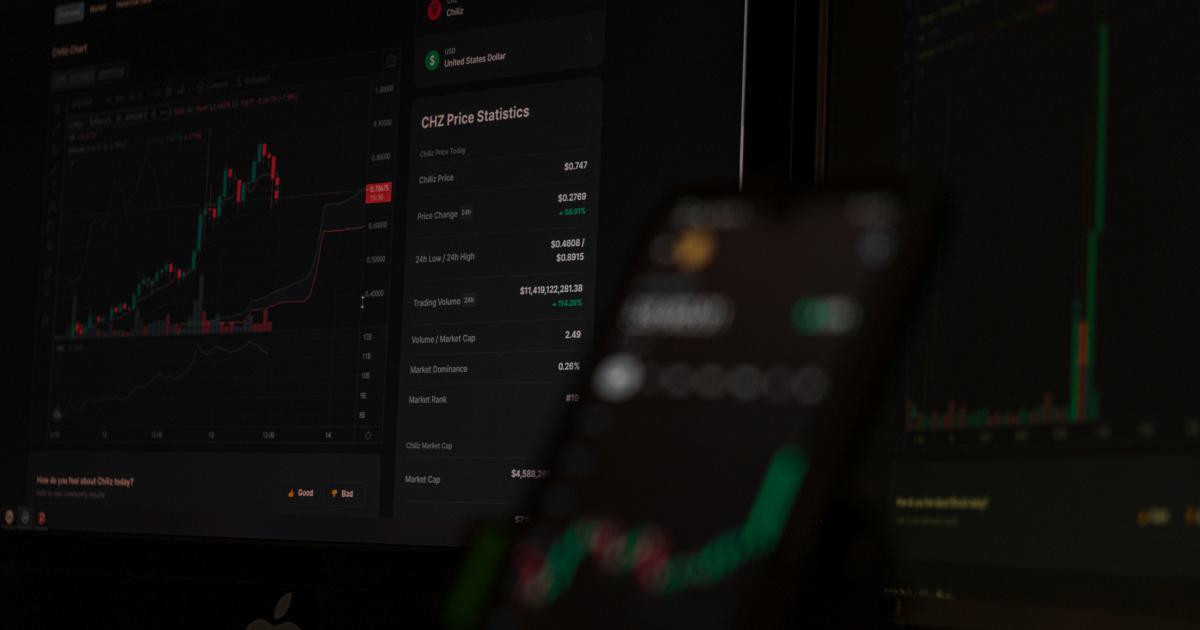How to Simplify Position Sizing Risk Management Techniques

In the fast-paced world of trading and investment, mastering position sizing risk management techniques can make the difference between long-term success and unexpected setbacks. Whether you’re a beginner or an experienced trader, simplifying these techniques enables you to better control your exposure, protect your capital, and optimize your returns. This article delves deep into the strategies and methodologies that underpin effective risk management, particularly focusing on the critical concept of position sizing. In the following sections, we will explore practical approaches, real-world examples, and actionable steps that traders and investors can use to simplify and refine their risk management strategies.
Understanding Position Sizing and Its Importance
Position sizing is a core element of any risk management strategy in trading and investing. It determines the number of units or contracts a trader should take based on their level of risk and the size of their portfolio. Often regarded as the bridge between technical analysis and risk management, position sizing ensures that even if a trade goes against you, the impact on your overall portfolio is controlled.
What is Position Sizing?
Position sizing involves calculating the amount of capital to risk on a specific trade. By linking your trade size directly to your risk tolerance and account size, you effectively manage the volatility of your portfolio. Several factors influence this decision including the trader's risk appetite, stop loss levels, and the overall market conditions.
Key concepts include:
- Risk per Trade: The percentage or dollar amount of your account that you are willing to lose on a single trade.
- Stop Loss Level: A predefined point where you will exit a trade if the market moves against you.
- Account Size: The total capital available for trading, which influences how much you can risk without devastating losses.
The importance of position sizing cannot be overstated. Without it, traders might over-leverage themselves, leading to psychological stress and potential margin calls. Moreover, effective position sizing integrates seamlessly with overall portfolio management, ensuring a balanced and diversified risk profile.
Why is Risk Management Essential in Trading?
Risk management is the art and science of identifying, analyzing, and mitigating uncertainties in trading and investment decisions. It not only protects your capital but also enhances your decision-making process. At its core, risk management involves understanding market dynamics, the susceptibility of your portfolio to adverse movements, and having a set plan to exit or adjust positions when necessary.
Some primary benefits of robust risk management include:
- Capital Preservation: The main aim is to keep your trading capital intact so you can continue trading and learning.
- Emotional Control: Knowing your risk is limited helps you avoid emotional decision-making, which is crucial during periods of high volatility.
- Consistency in Performance: By systematically managing risk, you can achieve more consistent returns over time.
A Brief History of Risk Management in Trading
The evolution of risk management in trading dates back many decades. Initially, traders relied mainly on gut feeling and experience to size positions. However, as markets became more structured and technology advanced, quantitative methods took center stage. Algorithms and computer models now assist traders in analyzing risk, making it possible to scale strategies that would have been nearly impossible using manual techniques.
Over time, numerous strategies have emerged, ranging from simple fixed-fractional methods to complex dynamic models based on volatility clustering and statistical correlations. Regardless of the method used, the ultimate goal remains the same: ensuring that each trade's overall impact on the portfolio is minimal and manageable.

Position Sizing Risk Management Techniques
Combining the principles of position sizing with robust risk management techniques creates a streamlined approach to trading that minimizes losses and maximizes gains. The keyword position sizing risk management techniques is not just a phrase—it encapsulates a set of best practices that every trader must master to reliably succeed in the markets.
Fixed Fractional Method
One of the simplest and most widely used methods is the fixed fractional method. Under this technique, a set percentage of your account is risked on each trade regardless of its size. For instance, if you decide to risk 2% of your account per trade and your account is $10,000, you would risk $200 on each trade.
Benefits and Impact:
- Simplicity: The method is easy to understand and implement.
- Consistency: It ensures that each trade's risk remains aligned with the overall portfolio size.
- Capital Protection: By limiting the risk per trade, even a series of losing trades cannot quickly deplete your capital.
Example Case Study: Imagine a trader with a $50,000 account using a fixed fractional risk of 1.5%. Each trade, therefore, risks $750. Even a streak of losses would allow the trader to stay within control, preventing catastrophic damage to the portfolio.
Kelly Criterion Approach
Another sophisticated yet effective method is the Kelly Criterion, which calculates the optimal position size based on the probability of winning and the payoff ratio of the trade. While the Kelly method is statistically robust, it requires accurate inputs and can sometimes suggest overly aggressive positions if not adjusted for market volatility.
Calculation Basics:
- The formula: f* = (bp - q) / b, where:
- f* is the fraction of the capital to risk,
- b is the net odds received on the wager,
- p is the probability of winning,
- q is the probability of losing (1 - p).
Utilizing the Kelly Criterion can theoretically maximize your logarithmic growth rate over time. However, many traders opt to use a fraction of the Kelly recommendation to account for uncertainty in the input variables, thereby reducing volatility.
Volatility-Based Position Sizing
Volatility-based techniques adjust position size according to the market's current volatility. The underlying assumption is that markets become more unpredictable during periods of high volatility, necessitating a smaller position size, and vice versa. Traders often use technical indicators such as the Average True Range (ATR) to gauge volatility.
Steps to Apply Volatility-Based Position Sizing:
Measure Volatility: Calculate the ATR or standard deviation of price movements.
Determine Stop Loss: Base your stop loss on a multiple of volatility measures.
Adjust Position Size: Inversely relate the size of your positions to the level of volatility. For high volatility, reduce size; for low volatility, increase size accordingly.
This approach not only protects you during turbulent times but also maximizes potential during calmer periods, helping to keep risk in line with expected market behavior.
Dynamic Position Sizing
Dynamic position sizing goes a step further by continuously adjusting the position size in response to changes in market conditions and the evolving risk profile of the portfolio. This technique uses real-time data to recalibrate trade sizes, ensuring that adjustments are made as soon as market indicators imply increasing risk.
Techniques Involved:
- Moving Averages: Use moving averages to detect trends and adjust positions accordingly.
- Risk Parity Models: Allocate risk across multiple assets to balance risk dynamically.
- Algorithmic Models: Some advanced traders employ automated systems that adjust positions based on real-time analytics and predefined risk thresholds.
Dynamic position sizing can be particularly beneficial in highly volatile markets where static techniques might either overexpose or underutilize the account. Its primary strength lies in its adaptability, making it a favorite among algorithmic traders and high-frequency trading firms.

Integrating Position Sizing with Overall Risk Management Strategies
Effectively managing risk is not solely about determining how much to bet on each trade; it involves a holistic approach that encompasses market analysis, trade execution, and ongoing monitoring. In this section, we explore strategies that integrate position sizing risk management techniques into a broader risk control framework.
Combining Technical Analysis with Position Sizing
Technical analysis serves as an essential component in shaping decisions on entry and exit points, while position sizing ensures that even incorrect predictions do not heavily damage your portfolio. Indicators such as moving averages, support and resistance levels, and momentum indicators guide technical analysis, providing a framework within which position sizing is applied.
Steps for Integration:
Signal Generation: Use technical indicators to identify potential trade setups.
Risk Determination: Calculate your risk per trade based on these setups.
Position Calculation: Adjust your trade size using a formula that incorporates your risk tolerance and stop loss levels.
Monitoring: Keep evaluating the trade against both technical signals and predefined risk metrics.
By using technical analysis for timing and entry while relying on position sizing for capital preservation, traders can achieve a balance that minimizes losses while allowing for potential gains.
Risk-Reward Ratio and Position Sizing
The risk-reward ratio is a fundamental concept that assists in determining whether a trade is worth taking. A favorable risk-reward ratio means that the potential reward outweighs the risk incurred. When combined with effective position sizing, the risk-reward framework provides a powerful way to filter trades and maximize profitability.
Best Practices:
- Define a minimum acceptable risk-reward ratio (e.g., 1:2, meaning for every $1 risked, the target reward is $2).
- Calculate potential outcomes by using technical analysis and market data.
- Adjust your position size so that losses remain manageable, even if multiple trades hit the stop loss.
For example, a trader might only take positions if the potential reward is at least twice the risk. Even if there are occasional losses, the overall strategy ensures a positive expectancy over many trades, leveraging the key principle that consistency in managing risk is often more important than chasing high-reward trades.
Portfolio Diversification and Position Sizing
Diversification minimizes the impact of any single adverse event on your overall portfolio. However, diversification is only effective when paired with appropriate position sizing for each asset class. By dynamically allocating risk across different sectors and asset types, investors can reduce the likelihood that a single market move displays catastrophic outcomes.
Actionable Steps for Diversification:
- Allocate your portfolio based on risk levels, industry trends, and market volatility.
- Use position sizing models to determine how much to invest in each asset.
- Continuously rebalance the portfolio in response to market movements and performance changes.
- Monitor correlations between different assets to avoid unintentional risk concentration.
The combination of diversification with precise position sizing ensures that investments are neither overly concentrated in one area nor exposed to unforeseen events that could impact an entire sector.

Advanced Techniques and Technological Aids in Position Sizing
In today’s digital age, technology plays a crucial role in refining risk management strategies. Software tools, algorithmic trading platforms, and machine learning models have revolutionized the way position sizing and risk management techniques are implemented.
Algorithmic Trading and Automation
Algorithmic trading platforms allow for automated trading strategies, where position sizing and risk management rules are coded directly into the system. These systems continuously track market data, adjust risk parameters, and recalibrate positions without human intervention. The benefits are immediately apparent:
- Speed: Automated adjustments reduce lag in response time.
- Accuracy: Models can operate with extreme precision, following risk management rules to the letter.
- Backtesting: Historical data can be used to test the viability of various position sizing models before live implementation.
For example, an algorithm may use volatility indicators alongside predefined rules to automatically scale down positions when market turbulence is detected, thereby minimizing exposure during volatile periods.
Machine Learning and Predictive Analytics
Machine learning algorithms offer the ability to predict market movements and adapt position sizes accordingly. Although still in its early stages in the trading world, the integration of predictive analytics with traditional risk management techniques holds significant promise. By analyzing patterns in market data, these models aim to forecast changes in volatility and adjust exposure before adverse trends fully materialize.
Consider a scenario where a machine learning system identifies an impending increase in market volatility based on historical patterns and real-time news analysis. The system can then automatically reduce position sizes, limiting potential losses. This level of responsive risk management can provide a critical edge in markets characterized by unpredictable swings.
Software Platforms and Custom Tools
Many trading platforms now feature advanced risk management modules that allow traders to simulate various position sizing scenarios. These tools can automatically compute risk per trade, integrate stop loss orders, and even adjust allocation based on ongoing performance. Custom tools, such as Excel-based calculators or specialized software, enable traders to tailor these techniques to suit their unique risk profiles and trading styles.
Expert Tips for Using Technology:
- Always validate algorithmic recommendations with manual oversight, especially when market conditions are unclear.
- Use backtesting to ensure that your models perform well under different market scenarios.
- Regularly update and calibrate your models to account for changes in market dynamics and volatility.
Such technological aids not only streamline the mathematical aspects of position sizing, but also free up traders to focus on strategy refinement and emotional discipline, two factors that are as crucial to success as the numbers themselves.

Building a Personalized Risk Management Plan
Every trader’s situation is unique. Thus, while understanding general principles is vital, you must also build a personalized risk management plan that reflects your trading style, psychology, and financial goals. The following steps outline how to construct a comprehensive plan incorporating position sizing risk management techniques.
Step 1: Assessing Personal Risk Tolerance and Financial Goals
Begin by realistically evaluating your risk tolerance. Are you comfortable with aggressive positions, or do you prefer a more conservative approach? Your answer should inform how much capital you risk per trade. Write down your financial goals, both short-term and long-term, and consider how much risk you’re willing to take to achieve them.
Actionable Guidance:
- Perform a self-assessment questionnaire.
- Calculate your maximum acceptable loss over a given period.
- Align your personal financial targets with your calculated risk capacity.
For instance, a young trader might adopt a slightly more aggressive approach with the understanding that they have time to recover from losses, while an individual nearing retirement might favor small, conservative trades.
Step 2: Defining a Clear Set of Trading Rules
Establish a set of rules that you will follow every time you trade. This includes:
- Entry and Exit Criteria: Define technical or fundamental indicators that signal when to buy or sell.
- Stop Loss and Take Profit Levels: Clearly delineate where these points will be set based on your risk tolerance and market conditions.
- Position Size: Use one or a combination of the methods discussed earlier to determine the size of each trade.
A well-structured set of rules will not only help in maintaining consistency in trading decisions but will also minimize the impact of emotional decisions when markets turn volatile.
Step 3: Continuous Monitoring and Adjustments
A trading strategy is not static. Markets evolve, and so must your risk management approach. Establish a schedule for reviewing your performance and recalibrating your strategy. Use the following checklist:
- Review trade outcomes weekly or monthly.
- Adjust stop loss levels based on market volatility.
- Reassess position sizes periodically in relation to portfolio growth or contraction.
By continuously refining your approach and learning from past trades, you build resilience into your strategy, ensuring that it remains effective even in changing market conditions.
Step 4: Learning from Real-World Cases
Real-world case studies can illustrate the effectiveness of a well-implemented risk management strategy. Consider the experience of a seasoned trader who attributes their long-term success to sticking rigorously to their stop loss and position sizing rules. Despite market cycles marked by significant turbulence, this trader was never forced to liquidate positions at unfavorable prices, thanks largely to a methodical application of risk management principles.
One notable example was a trader who, during a volatile market correction, experienced temporary losses. However, because they had adhered to fixed fractional position sizing, no single loss was devastating, and the trader was able to capitalize on subsequent rebounds. These case studies underscore that clarity, discipline, and a well-practiced risk plan can safeguard capital and promote sustained growth.
Common Pitfalls and How to Avoid Them
Even the best-laid plans can stumble without constant vigilance. Here are some common pitfalls in position sizing risk management and actionable advice to avoid them.
Overconfidence and Underestimating Volatility
One of the primary challenges for traders is the overconfidence that often arises from recent gains. Complacency can lead to oversized positions and increased exposure when market conditions change. To mitigate this, always recalibrate your sizing based on current market volatility instead of past performance. Implementing automated position sizing adjustments based on technical indicators like ATR can help neutralize emotional decision-making and prevent overexposure.
Ignoring the Bigger Picture
Sometimes, traders focus too narrowly on individual trades without considering the overall portfolio dynamics. Even with excellent position sizing for each trade, failing to diversify and appropriately balance the broader portfolio can lead to significant risk concentrations. Always include a review of asset correlations, sector trends, and economic indicators to ensure that your portfolio is not overly skewed towards a single event or asset.
Inadequate Backtesting and Simulations
Before enforcing any new risk management rules, thorough backtesting on historical data is essential. Inadequate testing may expose you to unforeseen risks. Use simulation software to model different market scenarios. This step is critical to understanding how your position sizing risk management techniques would have fared in past market turmoil.
Failing to Adapt
Markets are dynamic, and so should be your strategies. Relying solely on methods that once worked without adjustments can be a recipe for disaster. Regularly update your risk management plan and be open to incorporating new data, tools, and techniques as they become available. The willingness to adapt and evolve is what often separates successful traders from the rest.
Conclusion: The Path to Simplified and Effective Risk Management
Mastering position sizing risk management techniques is a journey that requires continuous education, discipline, and a proactive approach to market changes. By understanding and applying methods such as fixed fractional, Kelly Criterion, volatility-based, and dynamic position sizing, traders can limit potential losses, enhance portfolio consistency, and improve overall trading performance.
In an unpredictable market environment, a sound risk management plan is as crucial as technical analysis or market research. Investing time to develop a personalized plan that includes realistic goals, defined rules, and technological advances can profoundly impact your trading success. Whether you are managing a modest account or a sizeable portfolio, these techniques offer a blueprint for long-term financial resilience.
The journey toward trading mastery involves recurring assessments, learning from real-world experiences, and the judicious use of technology to fine-tune your strategy. With each trade, the application of position sizing risk management techniques becomes more intuitive, reinforcing confidence and ensuring that your trading career remains robust, regardless of market conditions.
Remember, consistency in applying these techniques is key. Every trader encounters setbacks, but with a strong risk management framework, you can weather market volatility, minimize losses, and position yourself for future gains.
Adopting simplified methods does not mean oversimplifying the challenges inherent in trading. It means bringing clarity and structure to your decision-making process, thereby transforming potential uncertainties into manageable steps towards financial growth.
By integrating these strategies into your daily trading routine and remaining adaptable to market dynamics, you can develop a sustainable and effective approach to risk management that underpins your long-term success in the competitive world of trading.
In summary, the essence of successful trading is not merely about identifying profitable opportunities but also about protecting yourself from unavoidable market risks. A blend of analytical tools, disciplined strategies, and continuous learning paves the way for a robust trading strategy that evolves with each market cycle, ensuring stability and resilience.
Embrace the challenge of simplifying complexity—equip yourself with the right knowledge, set clear rules, and let your disciplined approach drive your success.
Happy Trading!
Unlock Trading Potential with Automated Analysis
Tired of missing opportunities and making suboptimal trading decisions? TrendSpider's cutting-edge platform automates complex technical analysis, saving you time and reducing human error.
With multi-timeframe analysis, dynamic alerts, backtesting, and customizable charting, you'll gain a competitive edge in identifying trends and making informed trades across global markets.
Unleash the Power of Automated Trading Analysis
Are you struggling to keep up with the fast-paced trading world? TrendSpider empowers you with cutting-edge tools for optimal strategy execution.
Our automated technical analysis suite eliminates guesswork, backtests strategies, and delivers real-time alerts, saving you valuable time and effort.




